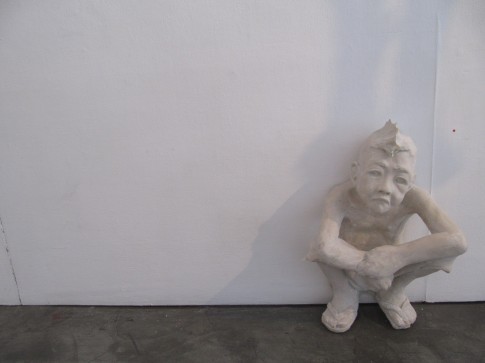
White is what greets you when you enter the gallery that’s been transformed into a playground by Manolo Sicat’s Matayataya. The first reaction is one of joy: the kind that play allows, no matter how old we get, especially because it is reminiscent of the kids that we were when the streets were safe to play in. But it sinks in soon enough: play here is everything and violent, because the streets have changed, because the streets are now testament to what has become the sad state of an impoverished nation.
To say that this exhibit is just about the violence of poverty wouldn’t do Sicat’s work justice. In fact it isn’t so much poverty as it is inequality, it isn’t so much inequality as it is injustice, it isn’t so much what’s unjust as it is how all these tie together into sadness and helplessness when children – and all that they represent – are objects and subjects.
The cold cast marble sculptures of Matayataya are precisely such: children at play are its necessary subjects, made into mere objects by the contexts within which they live.